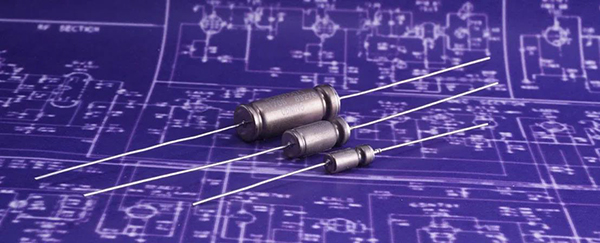HyCap series

HyCap series
HyCap series capacitors shall be comprised of sintered tantalum anodes and ruthenium oxide coated cathodes operating in aqueous electrolyte. The components shall be confined within a tantalum case, first by a compressed gasket, followed by a hermetically welded glass to metal seal.
HyCap capacitors are designed to operate reliably in extreme shock and vibration environments.
Electrical Specifications
|
Rated Voltage Range
|
10VDC to 125VDC
|
|
Capacitance Range
|
68uF to 2700uF
|
|
Life (@85ºC)
|
>2000 hours @ Rated Voltage
|
Mechanical Specifications
|
Test
|
Method
|
Condition
|
Remarks
|
|
Shock
|
MIL-STD-202 METHOD 213
|
D
|
Tested for 1ms at 500g peak
|
|
Vibration
|
MIL-STD-202 METHOD 204
MIL-STD-202 METHOD 214
|
H
II, Letter K
|
12 sweeps/axis, 80g peak
1.5 hours/axis, 53.8g rms
|
|
Moisture Resistance
|
MIL-STD-202 METHOD 106
|
|
6V Polarity
|
|
Solderability
|
To ANSI J-STD-002
|
|
Operating Temperature Range
|
-55ºC to +85ºC or 125ºC with voltage derating
|
|
Storage Temperature Range
|
-62ºC to +130ºC
|
Capacitor Life
HyCap Series capacitors are rated for >2,000 hours at 85°C and rated voltage or 125°C at de-rated voltage. The effective life of a capacitor in a given application is based on the specific operating voltage and average temperature. The rule of thumb says that every 10°C decrease in operating temperature yields approximately 2x the life. Additionally, each 10% de-rate in voltage will yield approximately 2x the life.
HC-HT capacitors provide a full rated life of 2000 hours at 200°C and and HC2-HT capacitors are rated for 1000 hours at 200°C.
All HyCap Series Capacitors have an unlimited Shelf life.
Handling Guidelines
Attachment /Mounting by leads only is not allowed. Always ensure capacitor is firmly secured to PWB, by either mounting studs, epoxy staking or both (preferred for vibration environments)
Provide adequate care to protect the Glass to Metal Seal (GTMS)
- Avoid Forces on the (+) pin, lateral, axial or torque.
- Avoid Mechanical Shock of any kind to the pin.
- Secure the part to PWB before soldering
Potting / Epoxy Staking
- In some applications it may be advisable to pot the cavity between the PWB and leaded surface
- Highest Shock/Vibration applications may require the capacitor to be fully potted.
Lead trimming
- Provide adequate care if leads must be trimmed